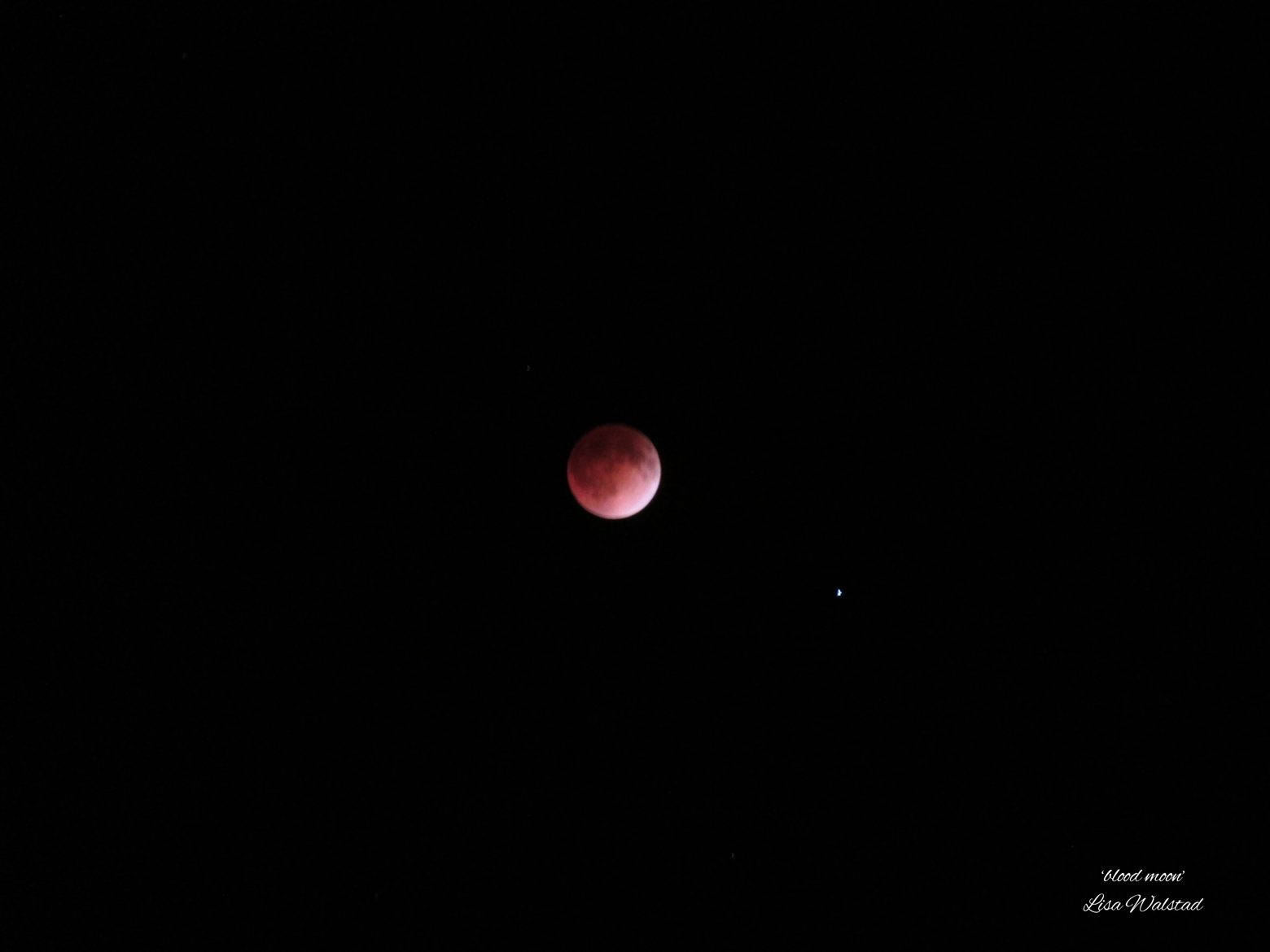Tonight, on April 15, 2014, we will witness the wondrous sight of a blood moon – the first of a set of four total lunar eclipses called a tetrad. It is said to start at 11:59 pm (CST) on April 14th and last until about 5:00 in the morning, with the best views around 2 am.
It’s interesting to note that a total lunar eclipse can only occur during a full moon phase, and the term “blood moon” is used when a total lunar eclipse takes place on the day of one of Israel’s feasts. Let’s take a look at the history of the blood moon.
As a bonus, if you look to the right of the moon this evening you will see an orange-colored Mars as well. Mars is especially close to the earth tonight (the closest it has been in 6 years) and much easier to see. I was fortunate enough to capture this phenomenon in the photo I included above in this post.
What Causes the Blood Color on the Moon?
The reddish color that the moon will cast is caused by it passing into the earth’s shadow. Sunlight is then bent and filtered through the earth’s atmosphere giving the moon its reddish glow.
The Blood Moon Throughout History
As I thought about this total lunar tetrad… I wondered, has this ever happened before? And if so, when? According to NASA, a tetrad is relatively rare – having occurred only 55 times since 1 AD!
While doing the research and study on this phenomenon, I discovered some very interesting threads that seem to run through the last 500 years of blood moon history. Since I like to share the interesting history that I dig into, here’s what I learned.
There were 7 tetrads that occurred since 162 AD that happened on important Jewish festival days and coincided with some world-changing events. Today will mark the 8th happening on an important Jewish day, Passover.
The next 3 in this current tetrad group will happen on the first day of Sukkoth in October 2014, and then Passover and Sukkoth again next year. These are the dates given by NASA.
The Past 7 Tetrads Happening on Jewish Feast Days
- 162 – 163 AD Tetrad: Occurred on Passover and Feast of Tabernacles. Coinciding with the worst persecution of Jews and Christians in the history of the Roman Empire. Within 3 years the Antonine Plague killed eight million people, a third of the population.
- 795 – 796 AD Tetrad: Occurred on Passover and Yom Kippur. King Charlemagne of the Holy Roman Empire established a demilitarized buffer zone between France and Spain, ending centuries of Arab invasions into Western Europe.
- 842 – 843 AD Tetrad: Occurred on Passover and Yom Kippur. Shortly after the eclipses, the Vatican church in Rome was attacked and looted by an Islamic invasion from Africa.
- 860 – 861 AD Tetrad: Occurred on Passover and Yom Kippur. The Byzantine Empire defeated Arab armies at the Battle of Lalakaon in Turkey and permanently stopped the Islamic invasion of Eastern Europe shortly afterward.
- 1493 – 1494 AD Tetrad: Occurred on Passover and the Feast of Trumpets, a few months after King Ferdinand and Queen Isabella of Spain ordered the Jewish people to leave Spain in 1492. This Edict of Expulsion was an impactful event in Jewish history, as well as in American history. In 1492 Christopher Columbus landed in America, which is now home to more than 5 million Jews outside Israel.
- 1949 – 1950 AD Tetrad: Occurred on Passover and the Feast of Tabernacles after Israel became a nation once again.
- 1967 – 1968 AD Tetrad: Occurred on the Jewish Passover and Feast of Tabernacles. This tetrad coincides with the 6 Day War of June 5, 1967, when Israel recaptured Jerusalem.
- 2014-2015 AD Tetrad: Let’s watch and see if any world-changing events come about with this set!


